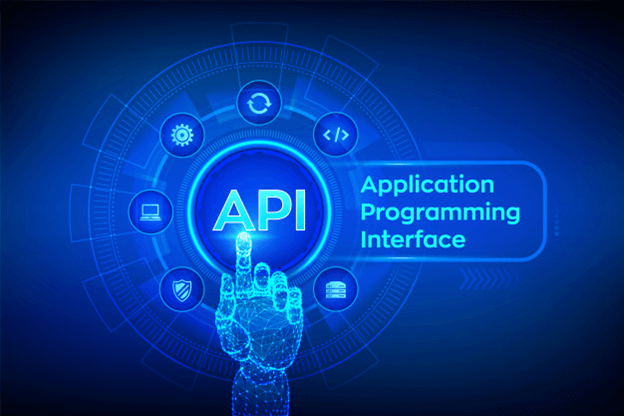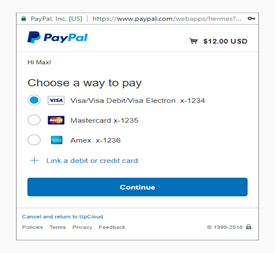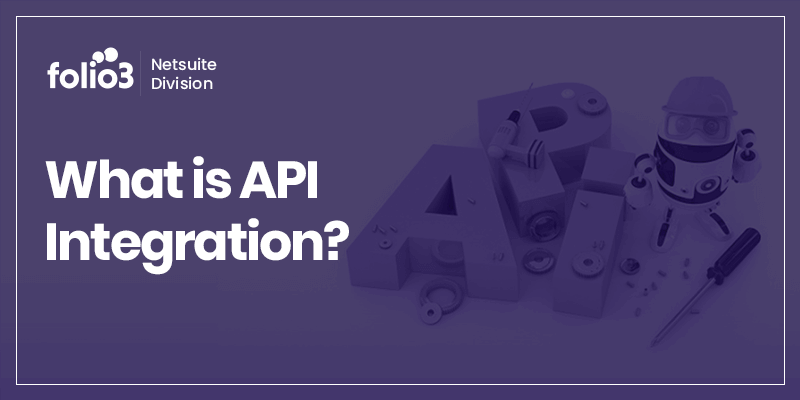Application Programming Interfaces or APIs have been around for longer than the Web. In addition to the popularity of server-based application providers and operating systems, network computing contributed to their increasing popularity by allowing clients to access resources on the server using conventional methods. As the Web grew more and more popular, APIs started to be used more in web development. When it initially debuted in 2000, Salesforce developed the first online APIs.

Most applications nowadays include APIs because of how common they have become in today’s digital environment. While different industries may use APIs in different ways, APIs are critical for application and online system functionality. This is true. However, for the system to run well, business processes and systems must have a way to communicate and exchange important data. With this component in place, the application now has access to an API. Let’s understand API integration better by first learning about APIs.

(source)
What is an API?
An API is a set of interfaces, concepts, and tools that enable software components to connect and communicate with each other. The user may use a web-based web tool or application. By making use of an API, customers may use an interface to ask an app for something. The next step is for the application to forward the data to an API, analyzing the information and providing a response. This results in a user-friendly data structure.
What is API Integration?
An Application Programming Interface is a protocol that facilitates the processing of requests and guarantees the smooth operation of business systems. APIs allow data, applications, and devices to communicate with one another. It transmits data and enables communication between devices and applications. APIs may also be described as an organization’s internet programming interface. It enables application-to-backend system communication. A programming interface provides a means for a business to sell its goods and services online. APIs allow apps to access services by adding code to them. It also improves connection and functionality.
APIs guarantee that different programs unobtrusively communicate with one another. However, this is accomplished by exposing just a subset of a program’s underlying functions. For instance, an API enables an app like Zomato to display restaurant locations on Google Maps. In other words, API integration helps both companies and customers.

Why is API Integration Important?
The capacity to link all the apps that float around the globe smoothly is an API integration procedure. Another way to say it is that API integration connects two or more apps via their respective APIs. In most cases, this is used to accomplish some tasks together.
Applications would be unable to communicate with each other without an API connection. It would be impossible for them to exchange data with each other. Because of this, a cluttered shared screen wouldn’t be integrated with an efficient API.
Prevention of Human Error
No human is immune to error. If one updates several apps oneself, one will make mistakes that lead to significant problems down the line. API integration reduces the number of manual activities performed by workers, reducing the likelihood of the issues.
Enhances Employee-Customer Bonding
Employees are more inclined to spend their time doing tactical, deliberate activities than manual, repetitive chores and are more productive and enjoyable. A corporate database is accessible to other internal systems through APIs, for example. Many businesses make it easy for partners and customers to exchange critical data with each other via APIs. The Harvard Business Review also helps consumers since happy workers are more likely to encounter customers more happily.
Ensuring APIs are integrated into enterprises is critical in today’s environment. Organizations must now build a linked system that automates the transfer of data across software applications. API integration is required to be feasible since it makes it possible to have a process and corporate data shared across apps in a particular ecosystem. It offers a whole new degree of freedom for delivering information and services.
A technical perspective: APIs make it possible for computer programs to work together. They allow two distinct programs to interact with each other. Application programming interfaces (APIs) enable businesses to expand far faster than ever before. For enterprises presently spending $590 billion annually on connecting different systems, they are a valuable solution. Just as the World Wide Web has enabled the Internet’s full potential, APIs are creating a new wave of innovation focused on providing shared services. An updated API enables one to make small changes to one system without spending money on additional software.

Examples Of API Integration
Weather Snippets
Weather data are one frequent example of API use that we see every day. Extreme weather snippets are very frequent, with no consistent platform of preference, such as on Google Search, Apple’s Weather app, or the smart home device one may be using. For example, if one searches “weather + [name of one’s city]” on Google, one will get a specialized box that has the current weather conditions and a prediction at the top of the search results (this is called a rich snippet). Currently, Google is not involved in meteorological data. Therefore they must get it from a third party. They get the newest meteorological information via an API, which makes it simple for them to reformat.

(source)
Pay with PayPal
Since it’s an API, paying via PayPal is in effect as well. This is much like how social media login works; using APIs and APIs alone, the “Pay with PayPal” feature is designed in such a way that the end application only has access to what it needs and nothing more.

(source)
The application makes an “order” request to the PayPal API, stating the amount owing and other relevant information. Next, the pop-up verifies the purchase and authenticates the user. The API confirms the payment to the application after everything is finished. When one pays for goods online, one does not witness the whole transaction as a customer. The data transmission to verify one’s credit/debit card information is, however, in the background. Installed in and frequently concealed from view, the Payment Portal API.
Twitter Bots
The wide variety of bots on Twitter are another example of APIs in action. Twitter bots are automated accounts that automatically post tweets, follow people, and send direct messages according to instructions in software. The bots listed here all use the Twitter API. The Twitter API may do many tasks beyond executing basic operations, such as Tweeting a particular phrase or following a person. For example, when a new follower is received, one may query the Twitter API to inform the bot.

(source)

How Does API Integration Work?
API integration is the process of connecting two or more apps by using their APIs. This makes it possible for the apps to communicate with one another. When data syncs with apps, the applications stay up-to-date and are capable of responding to business choices.
As an analogy, APIs may be compared to a client, a waiter, and a restaurant kitchen. A client says what she wants to the server, and the waiter replies, “Yes, madam.” The waiter listens to the customer and passes on the information to the kitchen. Kitchen employees prepare the meal, and then waiters take orders and bring them back to customers.
As a metaphor, a client is comparable to a user, who directs the waiter to the items on her menu. A waiter is an API, an interface that receives the customer’s order and translates the order into straightforward instructions that the kitchen then utilizes to fulfill that order. The kitchen works in the way the client wants their order to be created. The waiter places the order when the meal is ready and delivers it to the client.
Before anything else, one must first decide on one’s company objectives and procedures. To eliminate pain points, one must first discover them. After doing so, they may then devise ways to integrate platforms within and outside of the company. Once you’ve figured out what one wants to do, one can then begin the process of developing a customized application. After the one app interacts with platform APIs, it may provide additional features that assist one in one objectives.

Building an API
Following are some general steps that one should take in the production of API
- In general, one needs to design APIs that are simple, uniform, discoverable, and usable for the particular business model. For example, NetSuite API is one of the best APIs in the market today that can be integrated with a variety of software like CRM and HCS, making it one of the most usable APIs available today.
- Prepare applications and libraries on the server (and client-side), ideally with automatic workflows
- Create access and authentication
- Use one API service on a secure, scalable, and highly accessible platform
- Install logging, monitoring, and tracking to maintain the operation of one’s API service
- Establish quotas and procedures to limit overflows for traffic management
- Establish data analytics to collect information about the use
- Provide documents and related resources easily understandable
An API typically costs around $20,000 to develop, on average. However, pre-built integration and automation instruments may substantially reduce one’s expenses and save many hours of labor for one engineer.

Advantages Of Using API Integration
Innovation
The establishment and growth of new business models necessitate the use of APIs. Application economics is built on this foundation. It’s possible to create application economics more quickly, better, and less costly than other methodologies. Application programming interfaces (APIs) enable software applications to be enhanced with third-party digital goods or services to expedite development. Furthermore, an excellent API may boost a company’s reach in the market.
Automation
Machines can do the job instead of humans via APIs. Faster and more productive workflows may be implemented using APIs. To a great extent, API-based automation methods depend on a wide range of apps that have been integrated into a platform. One of the key elements of integration is that it automatically handles manual processes to provide a seamless, easy transition between connected apps. Thanks to automation and process integration, the one’s company can save expenses, save time, and reduce the amount of work.
Implementation
Because APIs allow developers to access program components, services and information delivered are more customizable.
Scope
By providing an API, a middle layer can be developed that allows information and services to be sent to new audiences, and personalization may be used to provide unique user experiences.
Availability of Fresh Data
The government’s information may now be shared with everyone, not just a chosen few.
Flexibility
APIs provide access to the material that can be produced and published automatically, which is then accessible for any distribution channel. It helps to make it easier to share and disseminate.
Integration
API integration makes information from one or many websites or applications easier to integrate. Fluid information transmission is guaranteed, along with an integrated user experience. Another good example of a process streamlining tool is software that may be utilized inside another tool or linked with other tools to automate a certain process.
Personalisation
It is possible to customize information and services by programming APIs so that everyone may tailor what they use most.
Adaptation
Changes throughout time are necessary for adaptation to take place, and APIs assist in helping to plan for them. This data transfer is facilitated better, and the material is examined more carefully when dealing with this technology. To sum it up, APIs provide flexible service offerings.
Improved connection between data and systems is one of the main benefits of API integration. When one business has access to more information, it can do more. If one chooses to share one real-time GPS position with these applications, this is an API in action. Through a two-way connection with the one’s phone, Uber can make updates in real-time, and that makes it easier for the user to have a good and efficient experience.

FAQs
What does API integration mean?
Integration with other applications, APIs allow systems to interchange data sources. Data sync and enhanced productivity are benefits gained via API integration that enable several sectors and layers of an organization to work in a more coordinated manner.
What exactly is an API?
An API is a programming interface whereby two apps potentially interact. It is a web-based API that is publicly accessible that can provide data, most likely in JSON or XML. You may call it the coding that determines the access points for the server, not the database or the server itself.
What is meant by API with an example?
Since API is a tool, one of the most well-known examples of the API methodology is the system used in iOS to recognize touchscreen events.
Is API integration easy?
Integrating with just one API is challenging; therefore, more than one is very difficult.
How much does an API integration cost?
The development cost ranges from $10-$15,000. However, time and money could be saved by using pre-built integration and automation tools.
What are the types of API?
Multiple types include open APIs, Partner APIs, Composite APIs, Internal APIs, RESTFUL, XML-RPC, JSON-RPC, and SOAP.
Conclusion
When APIs are utilized properly, they may offer significant business benefits. As new technical advancements occur at an increasing pace, API integration does not seem to be slowing down any time soon. We should prepare ourselves for enhanced API integration capabilities that will be both more powerful and simpler. In our present API integration stage, we must expect to tackle much more complex problems in the future.






